A Fast and Efficient Measurement System for Nuclear Spin Relaxation Times in Atomic Vapors
Abstract
1. Introduction
2. Vapor Cell Testing Theory and Visual Simulation
2.1. Relaxation Time Testing Theory
2.2. Visual Simulation
3. System Construction
3.1. Experimental Platform
3.2. Program Design Based on LabVIEW
4. Result and Discussion
5. Conclusions
Author Contributions
Funding
Acknowledgments
Conflicts of Interest
References
- Barbour, N.; Schmidt, G. Inertial sensor technology trends. IEEE Sens. J. 2002, 1, 332–339. [Google Scholar] [CrossRef]
- Kornack, T.W.; Ghosh, R.K.; Romalis, M.V. Nuclear Spin Gyroscope Based on an Atomic Comagnetometer. Phys. Rev. Lett. 2005, 95, 230801. [Google Scholar] [CrossRef] [PubMed]
- Qin, J.; Wang, S.; Gao, F. Advances in nuclear magnetic resonance gyroscope. Navig. Position. Timing 2014, 1, 64–69. [Google Scholar]
- Meyer, D.; Larsen, M. Nuclear magnetic resonance gyro for inertial navigation. Gyroscopy Navig. 2014, 5, 75–82. [Google Scholar] [CrossRef]
- Donley, E.A. Nuclear magnetic resonance gyroscopes. In Proceedings of the SENSORS, 2010 IEEE, Kona, HI, USA, 1–4 November 2010; pp. 17–22. [Google Scholar]
- Brown, J.M.; Smullin, S.J.; Kornack, T.W.; Romalis, M.V. New limit on Lorentz and CPT-violating neutron spin interactions. Phys. Rev. Lett. 2010, 105, 151604. [Google Scholar] [CrossRef] [PubMed]
- Jau, Y.Y.; Kuzma, N.N.; Happer, W. Measurement of Xe 129-Cs binary spin-exchange rate coefficient. Phys. Rev. A 2004, 69, 666–670. [Google Scholar] [CrossRef]
- Seltzer, S.J. Developments in Alkali-Metal Atomic Magnetometry; Princeton University: Princeton, NJ, USA, 2008. [Google Scholar]
- Larsen, M.; Bulatowicz, M. Nuclear Magnetic Resonance Gyroscope: For DARPA’s micro-technology for positioning, navigation and timing program. In Proceedings of the Frequency Control Symposium, Baltimore, MD, USA, 21–24 May 2012. [Google Scholar]
- Walker, T.G.; Larsen, M.S. Spin-Exchange Pumped NMR Gyros. Adv. At. Mol. Opt. Phys. 2016, 65, 373–401. [Google Scholar]
- Jiang, P.; Wang, Z.; Luo, H. Techniques for measuring transverse relaxation time of xenon atoms in nuclear-magnetic-resonance gyroscopes and pump-light influence mechanism. Optik 2017, 138, 341–348. [Google Scholar] [CrossRef]
- Chen, L.; Zhou, B.; Lei, G.; Wu, W.; Wang, J.; Zhai, Y.; Wang, Z.; Fang, J. A method for calibrating coil constants by using the free induction decay of noble gases. AIP Adv. 2017, 7, 075315. [Google Scholar] [CrossRef]
- Bloch, F.; Hansen, W.W.; Packard, M. The Nuclear Induction Experiment. Phys. Rev. 1946, 70, 474–485. [Google Scholar] [CrossRef]
- Roberts J, D. The Bloch equations. How to have fun calculating what happens in NMR experiments with a personal computer. Concepts Magn. Reson. Part A 1991, 3, 27–45. [Google Scholar] [CrossRef]
- Franzen, W. Spin Relaxation of Optically Aligned Rubidium Vapor. Phys. Rev. 1959, 115, 850–856. [Google Scholar] [CrossRef]
- Bhattacharyya, R.; Kumar, A. A fast method for the measurement of long spin—Lattice relaxation times by single scan inversion recovery experiment. Chem. Phys. Lett. 2003, 383, 99–103. [Google Scholar] [CrossRef][Green Version]
- Carr, H.Y.; Purcell, E.M. Effect of Diffusion on Free Precession in Nuclear Magnetic Resonance Experiments. Phys. Rev. 1954, 94, 630–638. [Google Scholar] [CrossRef]
- Cates, G.D.; White, D.J.; Chien, T.R.; Schaefer, S.R.; Happer, W. Spin relaxation in gases due to inhomogeneous static and oscillating magnetic fields. Phys. Rev. A 1988, 38, 5092–5106. [Google Scholar] [CrossRef] [PubMed]
- Donley, E.A.; Long, J.L.; Liebisch, T.C.; Hodby, E.R.; Fisher, T.A.; Kitching, J. Nuclear quadrupole resonances in compact vapor cells: The crossover between the NMR and the nuclear quadrupole resonance interaction regimes. Phys. Rev. A 2009, 79, 013420. [Google Scholar] [CrossRef]
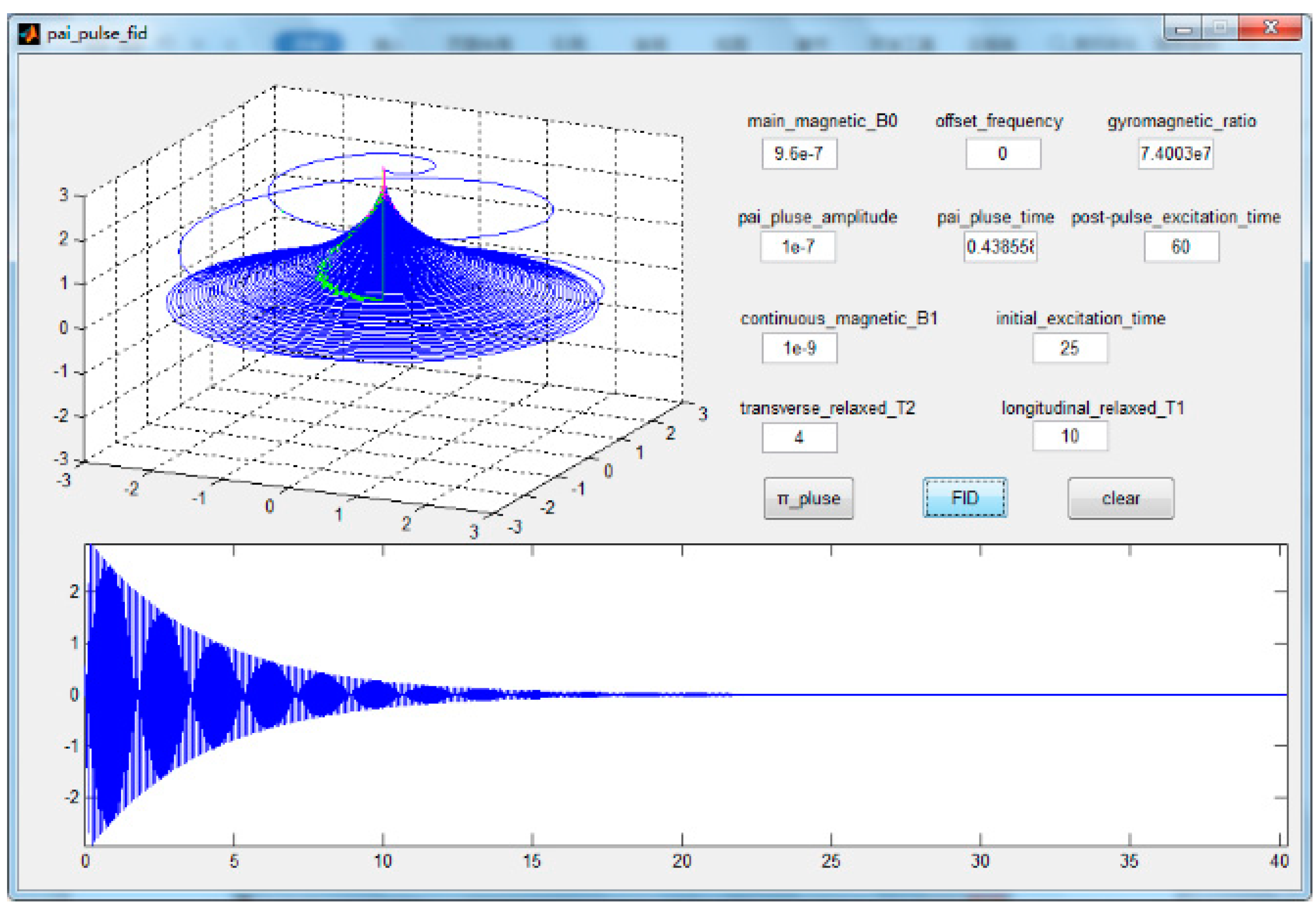
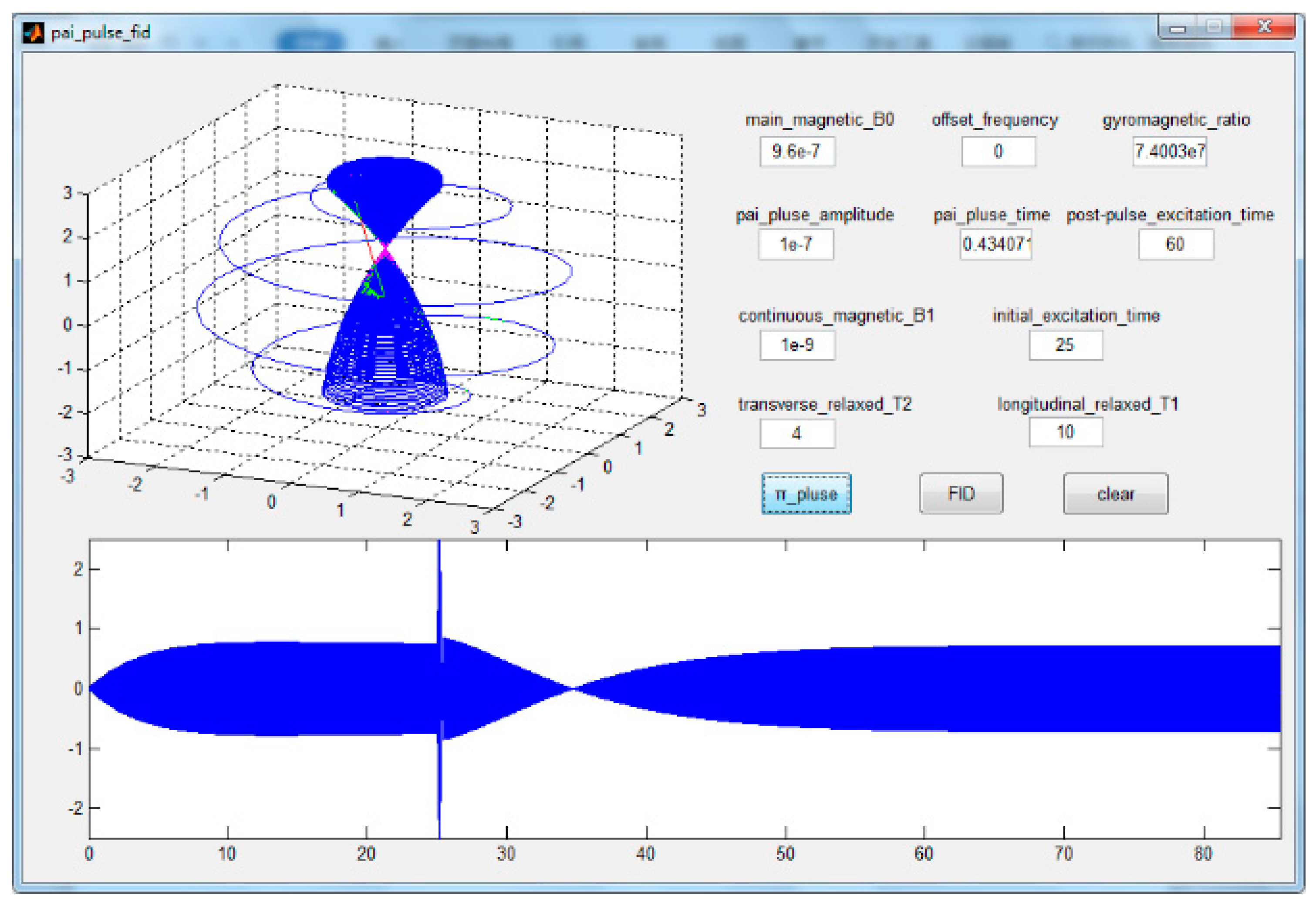
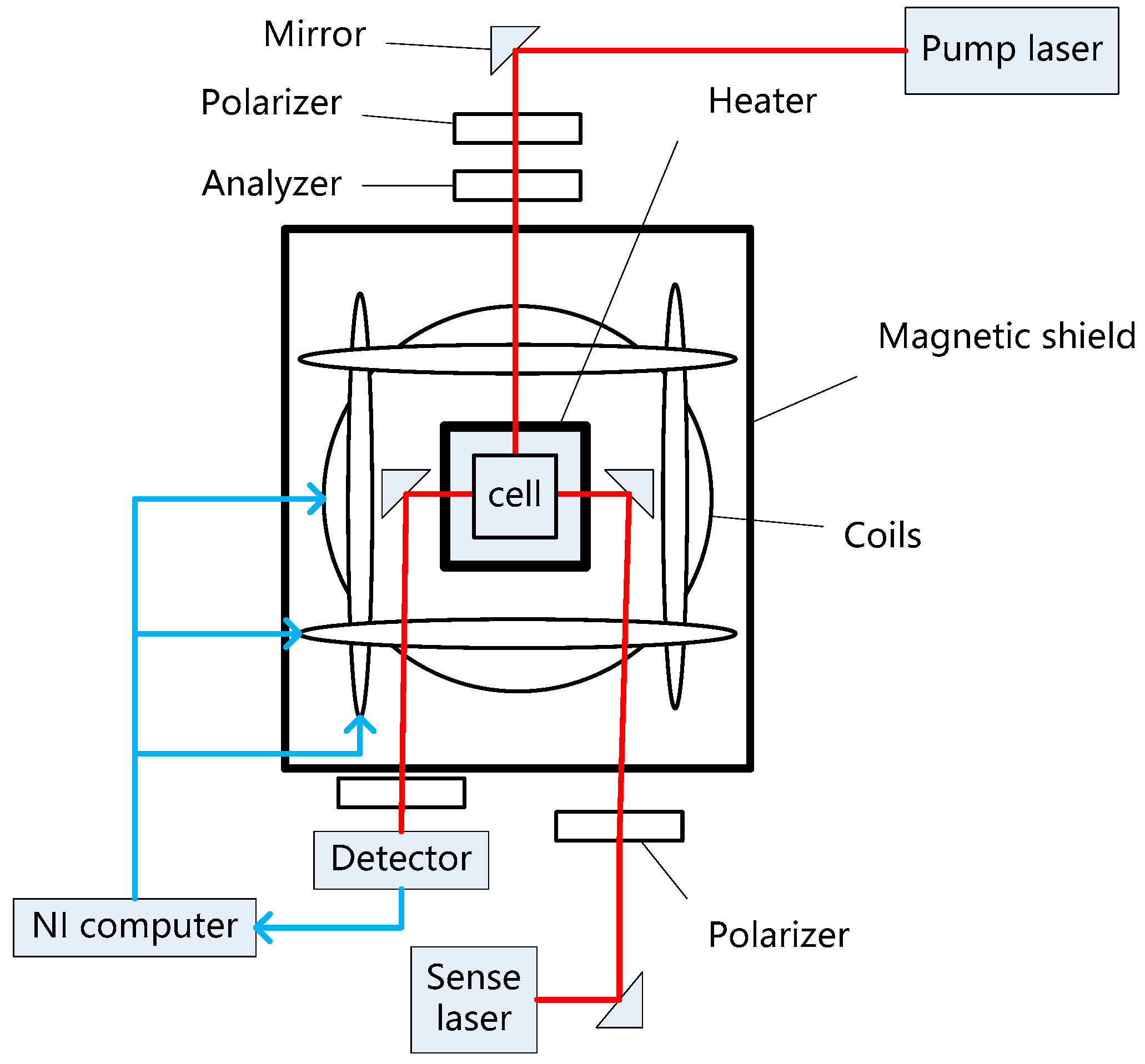
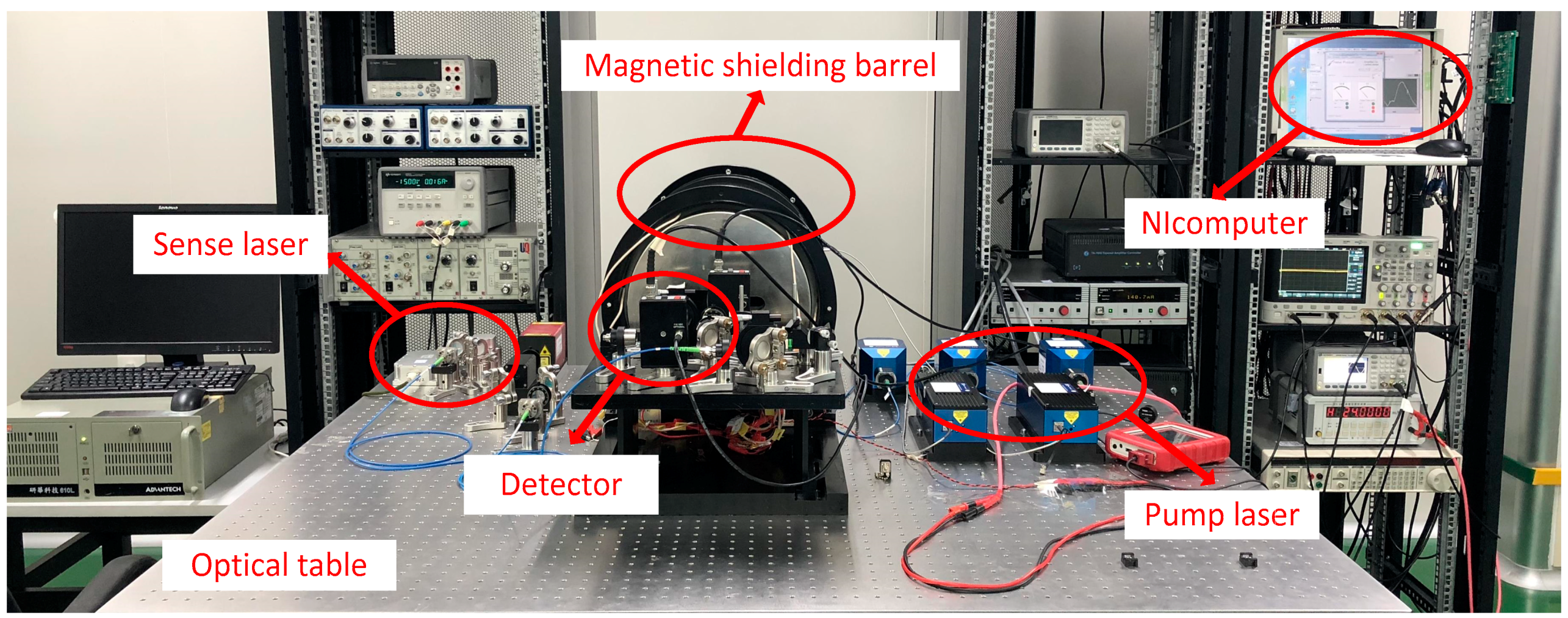
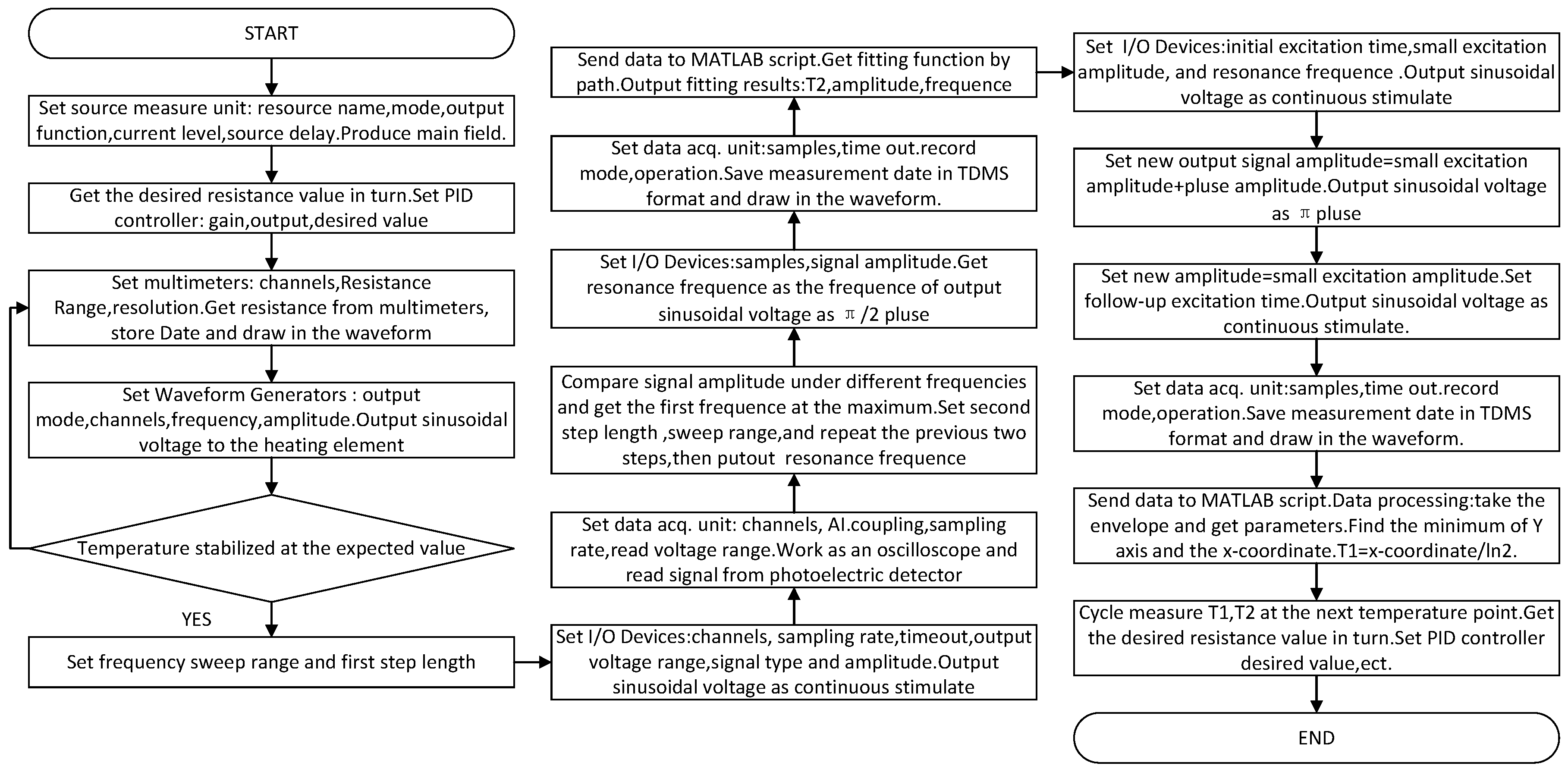
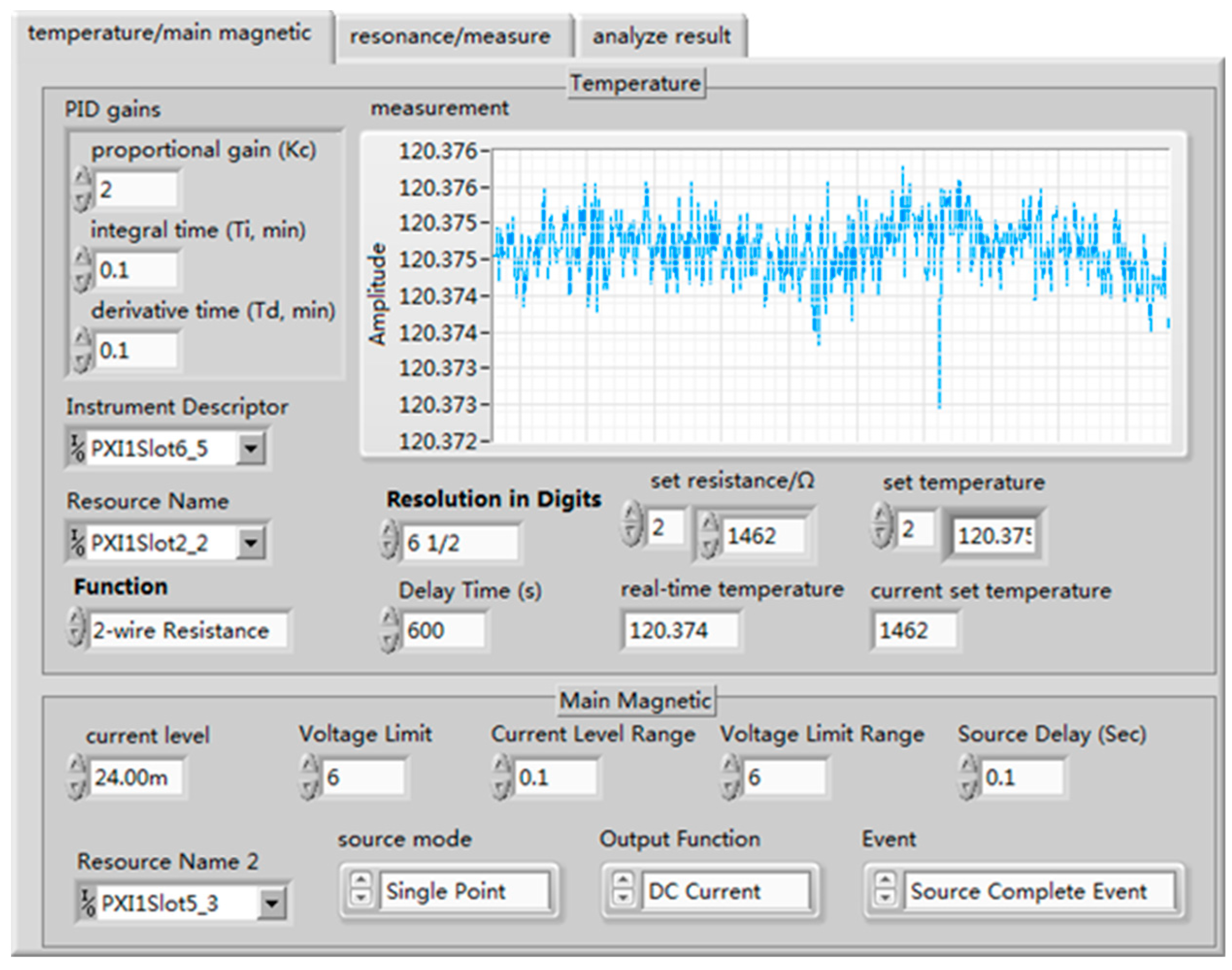
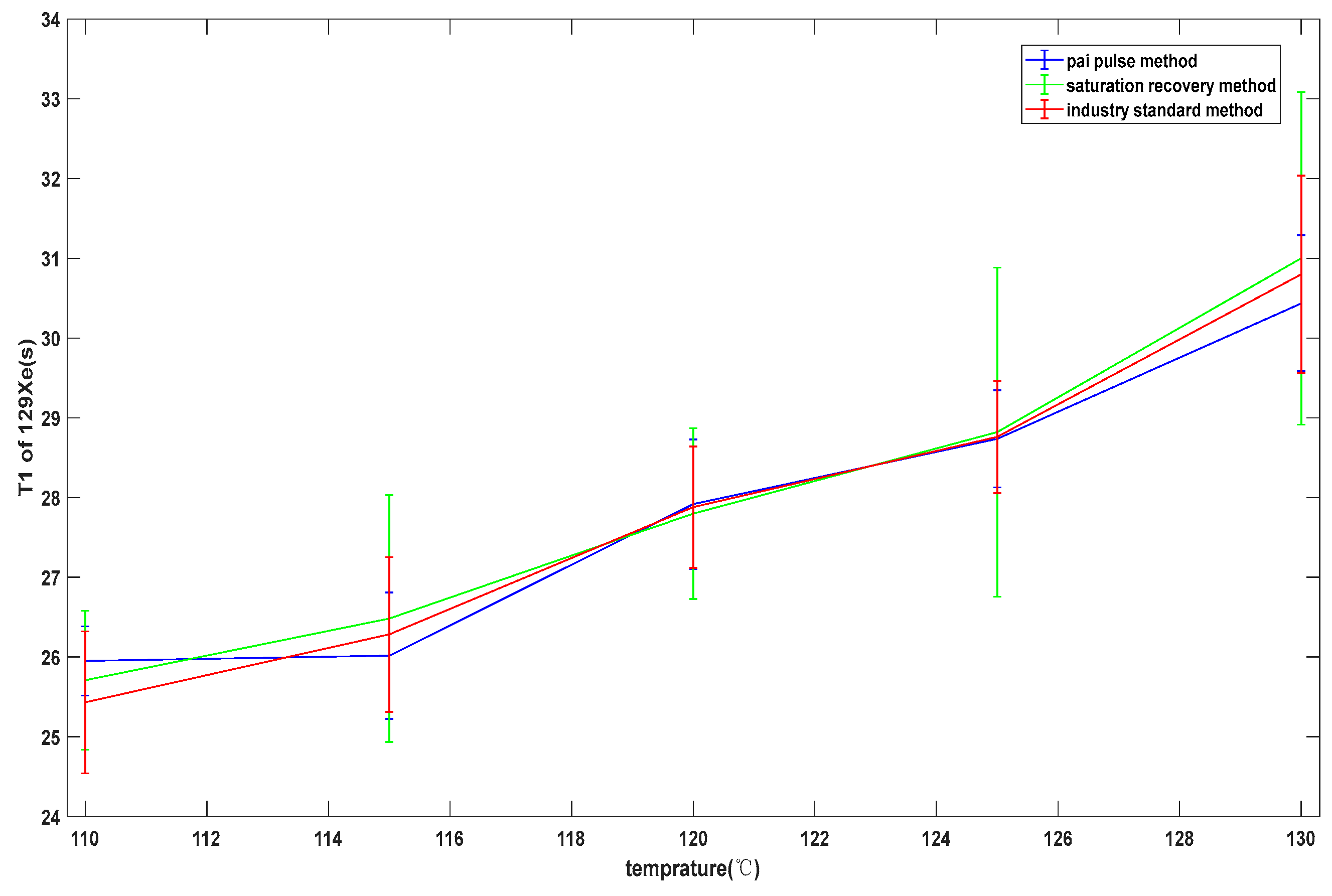
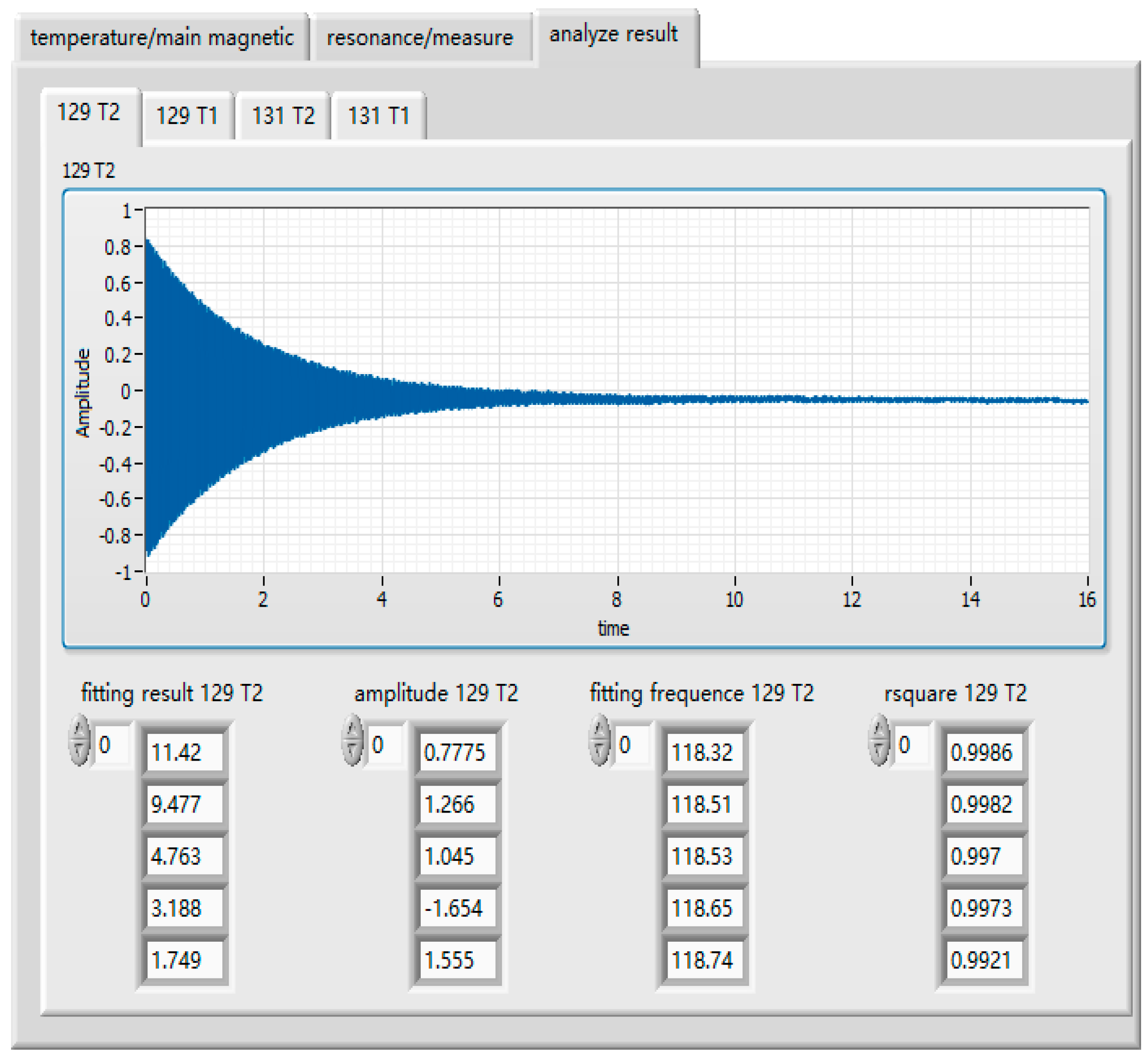
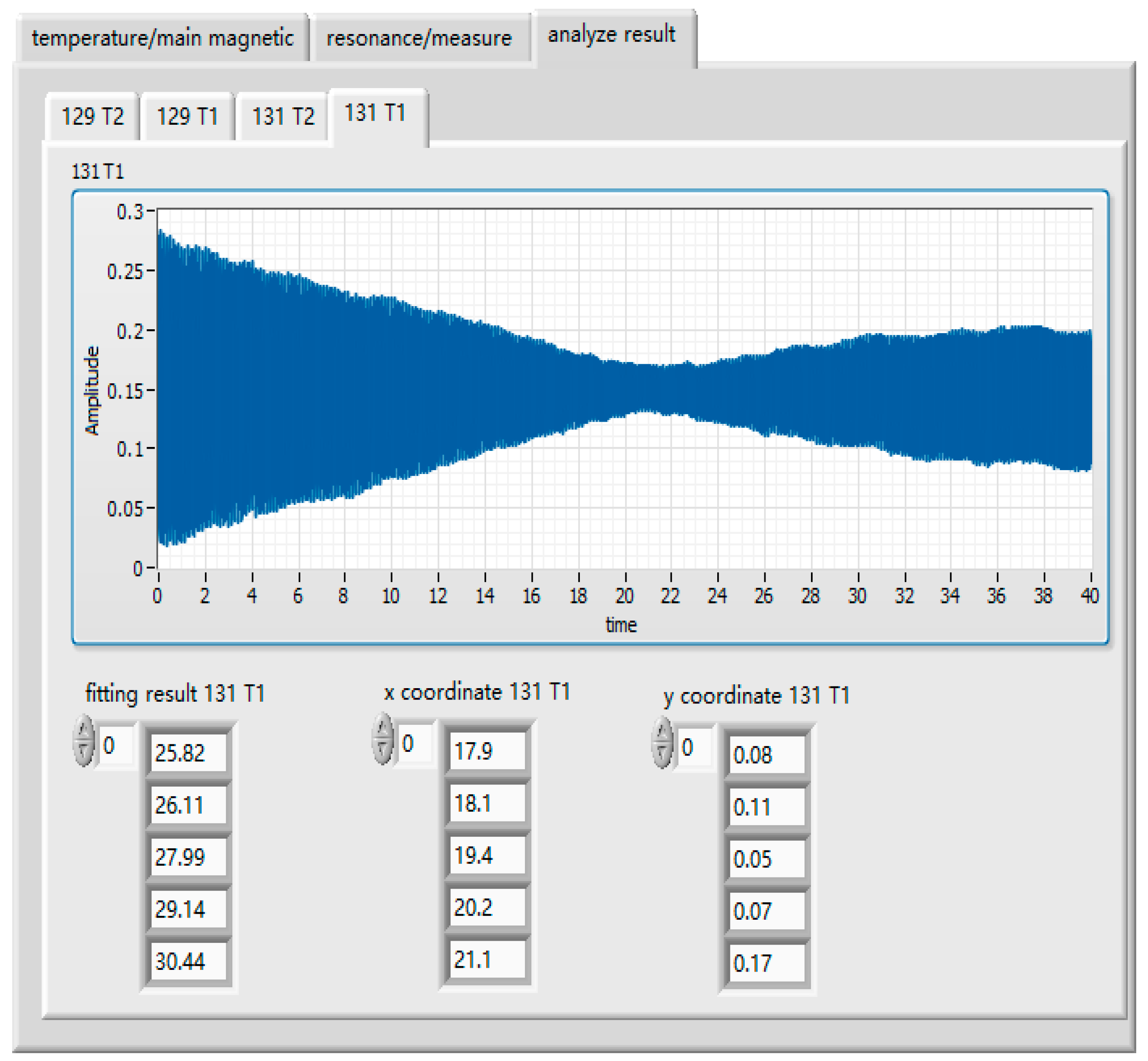
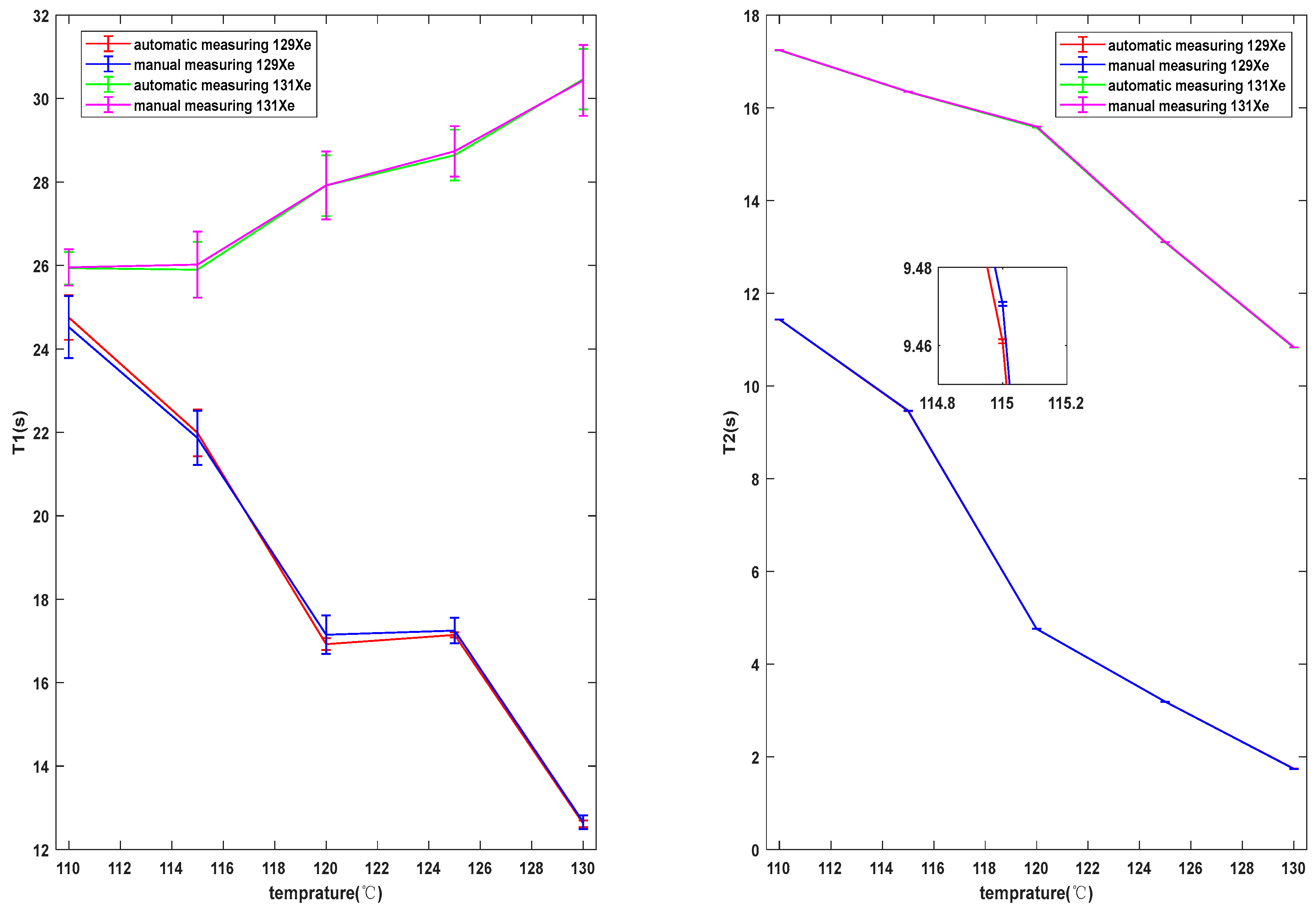
© 2019 by the authors. Licensee MDPI, Basel, Switzerland. This article is an open access article distributed under the terms and conditions of the Creative Commons Attribution (CC BY) license (http://creativecommons.org/licenses/by/4.0/).
Share and Cite
Huang, T.; Miao, C.; Wan, S.; Tian, X.; Li, R. A Fast and Efficient Measurement System for Nuclear Spin Relaxation Times in Atomic Vapors. Sensors 2019, 19, 4863. https://doi.org/10.3390/s19224863
Huang T, Miao C, Wan S, Tian X, Li R. A Fast and Efficient Measurement System for Nuclear Spin Relaxation Times in Atomic Vapors. Sensors. 2019; 19(22):4863. https://doi.org/10.3390/s19224863
Chicago/Turabian StyleHuang, Ting, Cunxiao Miao, Shuangai Wan, Xiaoqian Tian, and Rui Li. 2019. "A Fast and Efficient Measurement System for Nuclear Spin Relaxation Times in Atomic Vapors" Sensors 19, no. 22: 4863. https://doi.org/10.3390/s19224863
APA StyleHuang, T., Miao, C., Wan, S., Tian, X., & Li, R. (2019). A Fast and Efficient Measurement System for Nuclear Spin Relaxation Times in Atomic Vapors. Sensors, 19(22), 4863. https://doi.org/10.3390/s19224863





